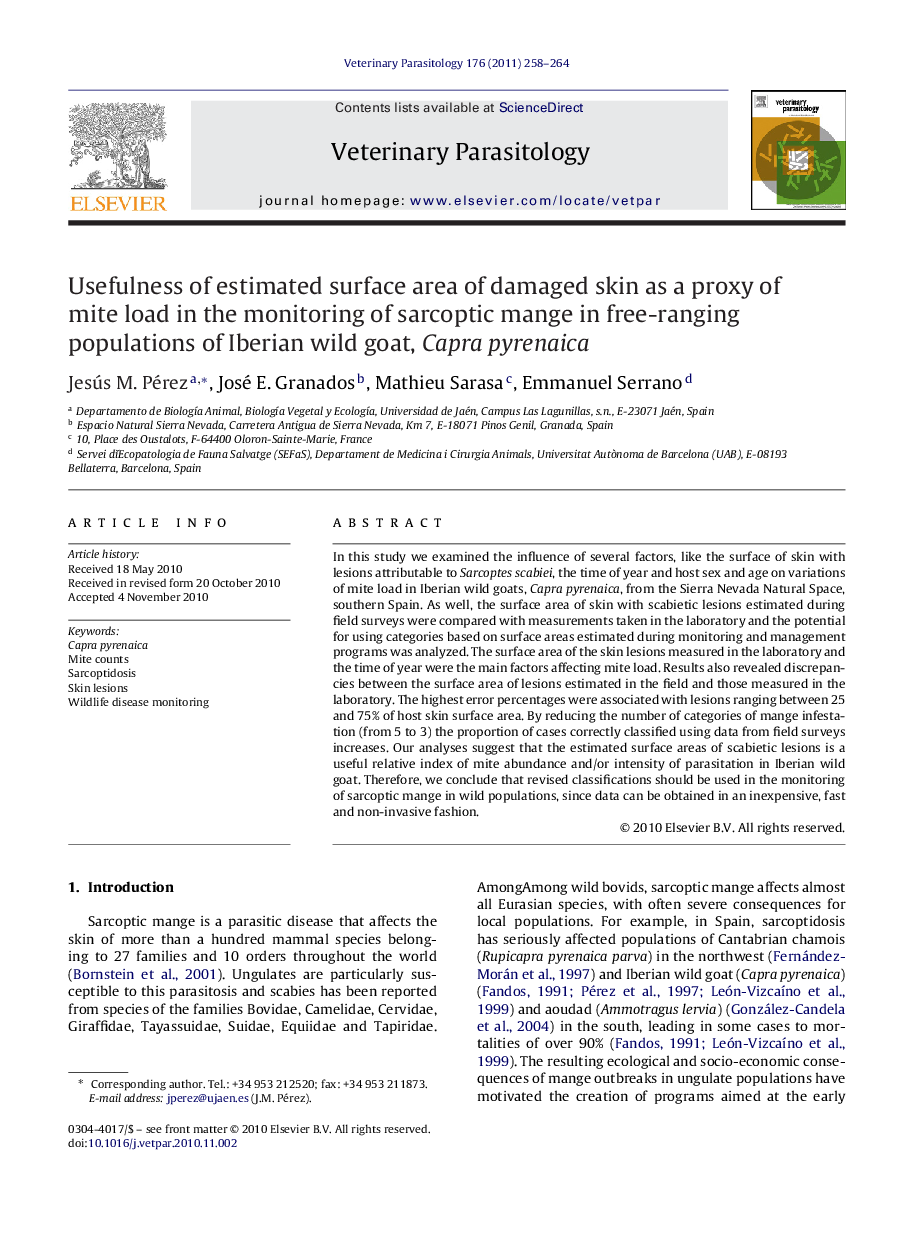| Article ID | Journal | Published Year | Pages | File Type |
|---|---|---|---|---|
| 5805944 | Veterinary Parasitology | 2011 | 7 Pages |
In this study we examined the influence of several factors, like the surface of skin with lesions attributable to Sarcoptes scabiei, the time of year and host sex and age on variations of mite load in Iberian wild goats, Capra pyrenaica, from the Sierra Nevada Natural Space, southern Spain. As well, the surface area of skin with scabietic lesions estimated during field surveys were compared with measurements taken in the laboratory and the potential for using categories based on surface areas estimated during monitoring and management programs was analyzed. The surface area of the skin lesions measured in the laboratory and the time of year were the main factors affecting mite load. Results also revealed discrepancies between the surface area of lesions estimated in the field and those measured in the laboratory. The highest error percentages were associated with lesions ranging between 25 and 75% of host skin surface area. By reducing the number of categories of mange infestation (from 5 to 3) the proportion of cases correctly classified using data from field surveys increases. Our analyses suggest that the estimated surface areas of scabietic lesions is a useful relative index of mite abundance and/or intensity of parasitation in Iberian wild goat. Therefore, we conclude that revised classifications should be used in the monitoring of sarcoptic mange in wild populations, since data can be obtained in an inexpensive, fast and non-invasive fashion.
